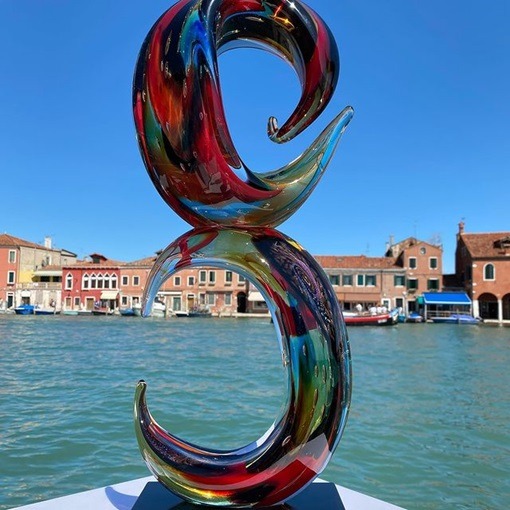The Island of Murano
The small island of Murano, off the coast of Venice, is composed of seven smaller islands connected by bridges. As in Venice, Murano is home to a network of canals, lined with ancient buildings and scenic views, but unlike the bigger city, it offers a simpler, more authentic charm. Find out more about Murano travel tips and the history of the islands by reading on.
Venetian glass artisans first set up shop in Murano in the late 1200s, in order to save the wooden buildings in Venice from fires that originated in the old workshops. The following years saw a boom in artisan products, and this small town became one of the main producers of glass in Europe. It was also prohibited for glass-makers to leave the island, so the secrets of glassmaking could be preserved. The Murano glass industry managed to establish itself as an elite glass provider for centuries, and its artisans developed and refined a number of techniques. These studies have resulted in crystallized glass, enameled glass, aventurine, millefiori, and imitation gemstones made out of glasses.
Travel to Murano from Venice
It is now safe to operate the glass furnaces, which make an interesting, unique tourist attraction. With the Vaporetti (water buses) that you can buy online, Murano is very easy to reach from Venice. The water buses in Murano stop on many of its small islands, although some are slower than others due to their island-like structure. The following lines can be taken:
- There is a train line 4.2 from Ferrovia (Train Station) or Piazzale Roma which runs every 20 minutes, taking 35 minutes.
- There are two lines that serve San Marco: Line 4.1 and Line 7. Both lines run every 20 minutes, 25-minute trips
- Every 10 minutes, lines 4.1 and 4.2 at Fondamenta Nuove, 8-minute trip
You can also opt for a guided tour on a typical Venetian boat if you want to visit all three islands of the Venice Lagoon (Murano, Burano, and Torcello). The rate is slightly higher though.
Visits to Venice are incomplete without a visit to Murano
When you reach the first Vaporetto stop, you can get off and explore the town at your own pace: wherever you go, you’ll find hundreds of shops, workshops, and factories that make Murano glass. Some Murano glass factories are only accessible by appointment and require entrance tickets. During your visit, you can witness Murano glass blowing demonstrations. There are others that don’t allow visitors, because they want to concentrate on glass making and don’t want competitors observing and stealing their ideas. You may be able to arrange for a gallery or dealer to take you to see the more artistic workshops if you’re a collector.
At Original Murano Glass OMG® you can see how skilled glass masters produce and display Murano glass objects in their showroom, including precious items and unique pieces that find their place in a traditional Italian home.
The glassmakers of Murano still use traditional techniques to make jewelry and lamps. The Venetian master glass-maker works at the glass furnace along with his first assistant (Servo), his second assistant (Serventino), and his assistant (Forcellante). Upon the end of the blowpipe is gathered the glass bolo, a semi-liquid vitreous blob of glass heated to temperatures of 800 ° C or 1500 ° F. Once heated, it should stay in motion at all times. The object is swung back and forth and blown into until it takes the shape the artist desires. It is then put into another oven to cool and harden. As it is cooling extremely slowly, the glass is protected from cracking due to thermal fluctuations.
You won’t find all the murano glass you see in the shops as being from Murano, but some of it is. There are shops that sell cheap imitations as authentic, so always check their windows and doors for the “Vetro Artistico Murano” trademark.

